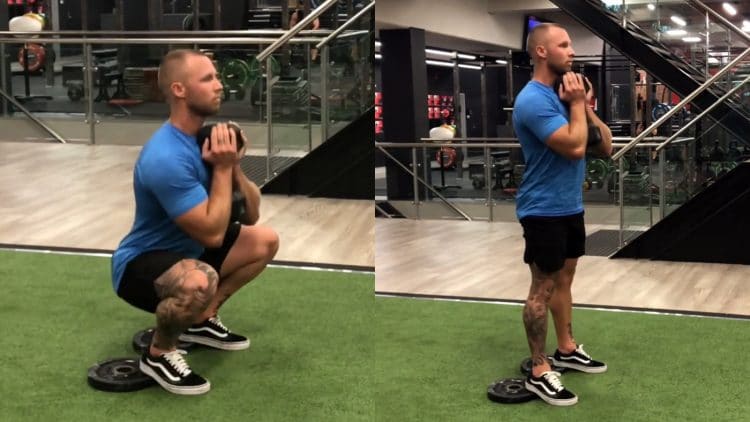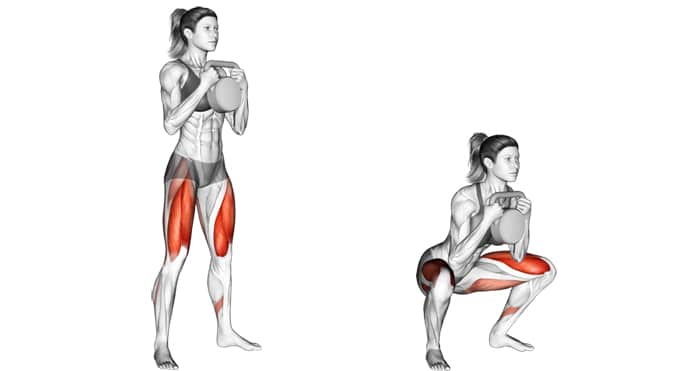
Heel elevated squats are a variation of the traditional squat exercise where the heels are elevated on a platform or weight plates. This exercise is popular among athletes, bodybuilders, and fitness enthusiasts as it targets different muscles compared to the regular squat exercise.
Muscles Worked

The heel elevated squat targets the quadriceps, hamstrings, glutes, and calves. The quadriceps muscles are located at the front of the thigh and are responsible for extending the leg at the knee joint. The hamstrings are located at the back of the thigh and are responsible for flexing the leg at the knee joint. The glutes are the muscles of the buttocks and are responsible for hip extension. The calves are located at the back of the lower leg and are responsible for plantar flexion of the foot.
When performing the heel elevated squat, the quadriceps and glutes are primarily targeted due to the increased range of motion. The hamstrings and calves are also targeted to a lesser extent as they assist in stabilizing the body during the exercise.
How to Perform Heel Elevated Squats

To perform the heel elevated squat, follow these steps:
- Place a platform or weight plates under your heels.
- Stand with your feet shoulder-width apart and toes pointing forward.
- Brace your core and keep your chest up and back straight.
- Bend your knees and hips, lowering your body towards the ground.
- Pause at the bottom of the movement, then push through your heels to return to the starting position.
- Repeat for the desired number of repetitions.
Variations

There are several variations of the heel elevated squat that can be used to target different muscles or add variety to your workout:
- Sumo Heel Elevated Squat - Perform the squat with a wide stance, targeting the inner thighs.
- Single Leg Heel Elevated Squat - Perform the squat on one leg, targeting each leg individually.
- Heel Elevated Goblet Squat - Hold a weight in front of your chest, targeting the core muscles.
Tips for Performing Heel Elevated Squats

Here are some tips to help you perform heel elevated squats safely and effectively:
- Start with a lower platform or weight plates and gradually increase the height as you become more comfortable with the exercise.
- Maintain proper form throughout the exercise to avoid injury.
- Breathe in as you lower your body and exhale as you push back up.
- Don't let your knees cave inwards as you lower your body.
- Use a weight that is appropriate for your fitness level.
Incorporating Heel Elevated Squats into Your Workout

Heel elevated squats can be incorporated into your leg day workout or full-body workout routine. Here is an example leg day workout that includes heel elevated squats:
- Warm-up with 5-10 minutes of cardio.
- Perform 3 sets of 10-12 repetitions of heel elevated squats.
- Perform 3 sets of 10-12 repetitions of deadlifts.
- Perform 3 sets of 10-12 repetitions of lunges.
- Perform 3 sets of 10-12 repetitions of leg curls.
- Cool down with stretching exercises.
Conclusion
Heel elevated squats are a great exercise for targeting the quadriceps, hamstrings, glutes, and calves. They can be performed with a variety of variations to add variety to your workout routine. Remember to maintain proper form and gradually increase the height of the platform or weight plates to avoid injury.